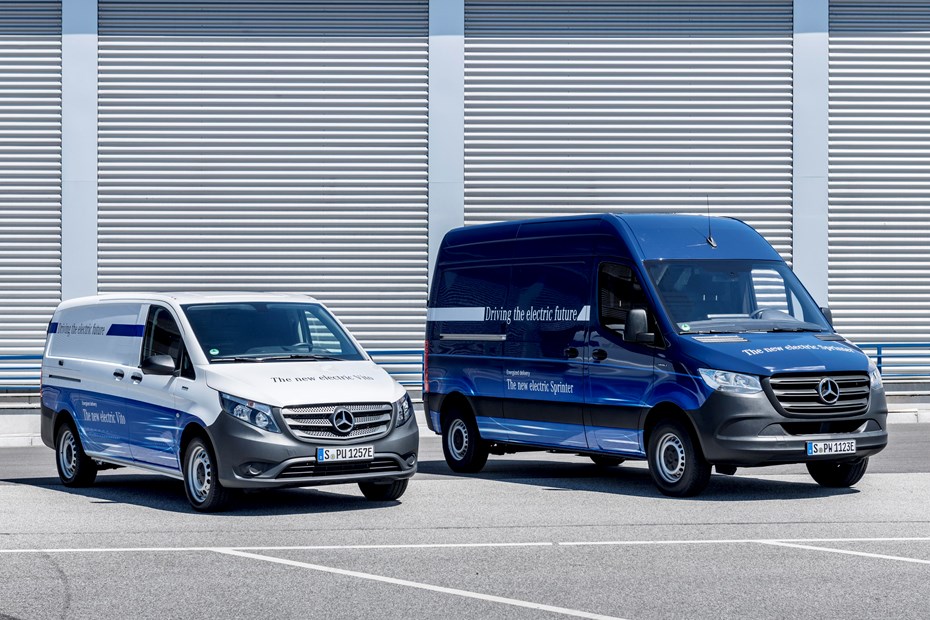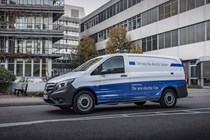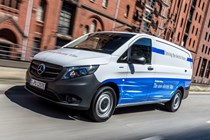Mercedes-Benz Vans has confirmed it is about to get very serious about zero-emission electric vans – not only have we now drivem the eVito in production form, we’ve also tried a prototype of the eSprinter.
Those, combined with a future eCitan are central to what Mercedes describes as a ‘holistic electric drive strategy’..
The Parkers Vans guide to electric vans
The strategy has been outlined at a ‘Mercedes eDrive@VANS’ workshop, and aims to deliver not just electric versions of the Vito, Sprinter and Citan, but a ‘technological ecosystem tailored specifically to customers’ business needs’.
Sounds fancy, but, as we understand it, basically means that Mercedes Vans is planning to help you make the best decision about what kind of electric van set-up will work best for you.
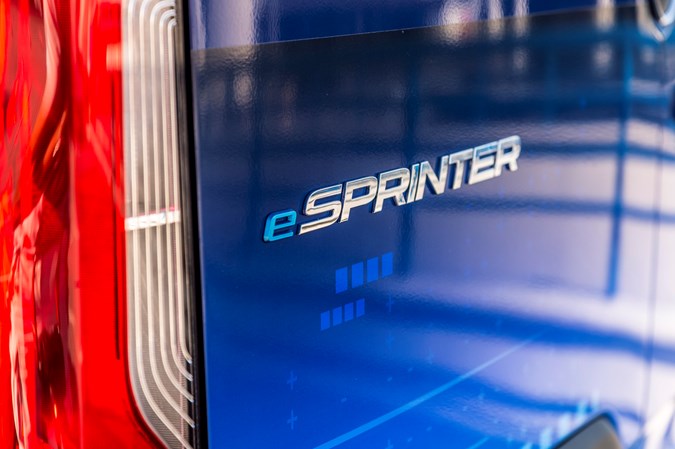
Here’s what we know so far.
What are the new Mercedes electric vans and when will they go on sale?
Mercedes has announced three new electric vans:
- eVito – based on the current Vito medium van and on sale from 2019 in the UK
- eSprinter – based on the latest-generation Sprinter large van and due on sale by the end of 2019
- eCitan – presumably based on the Renault Kangoo ZE; further details are unclear at this stage
Seems slightly curious that Mercedes has placed the Citan last on the list, given this is built on the same platform as the Renault Kangoo and there is already an electric version of that.
Of the three, we know the most about the eVito at this stage.
Mercedes eVito technical specification – including driving range, payload and load area details
The new eVito is based on the Vito model first introduced in 2015, and is the follow-up to the previous Mercedes Vito E-Cell electric van, which went into limited production in 2010. British eVito sales are likely to begin in early 2019.
With a 41.4kWh battery pack, Mercedes says the new eVito will have a driving range of ‘around’ 93 miles (150km) on a single charge – and still manage 62 miles (100km) in low temperatures when carrying a full load.
Not massively far, but enough for daily urban use, Mercedes reckons.

In this configuration, the eVito will have a charging time of six hours, while the 84kW electric motor (equivalent to 114hp – the same as the Vito 111 CDI diesel) produces 300Nm of instant torque. Top speed can be limited to 50mph to maximise range, or 75mph if you need greater performance.
Maximum payload for the eVito will be 1,037kg, and it has 6.6 cubic metres of load volume – so it’s spacious but not going to be ideal for particularly heavy loads due to the weight of the electric drive technology (particularly the batteries).
Mercedes eSprinter technical specification – including driving range, payload and load area details
Following on from the eVito, the eSprinter could reach the UK before the end of 2019. It’s a fully electric version of the latest generation of Sprinter introduced in 2018.
As it’s not yet been revealed in full production form, technical details are provisional, but it’s likely to be only available in the 5,926mm-length initially, but with a choice of three or four battery cells.
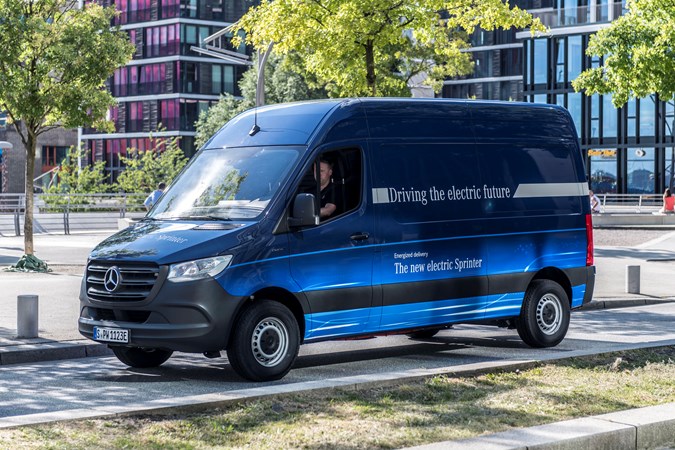
The three-battery version has a capacity of 41.4kWh, giving a range of 70 miles and requires around six hours to rehcarge on a 7kWh connection. Maximum payload is 1,040kg.
Opt for the four-battery eSprinter with a 55.2kWh capacity and you’ll have a range of 93miles, but it requires eight hours for a full recharge on the same 7kWh connection. Payload drops to 900kg due to the weight of the fourth battery.
Load volume for both versions is 10.5 cubic metres.
What is the Mercedes-Benz Vans electric mobility strategy?
In order to help smooth the adoption of electric vans, which Mercedes says will become increasingly important in cities and towns in the near future, the firm has come up with what it calls five ‘cornerstones’:
- Holistic ecosystem
- Sector focus
- Commercial feasibility
- Co-creation
- Technology transfer
That sounds like a lot of manufacturer marketing waffle, so let’s take a closer look at what each of those means.
1. Holistic ecosystem
The full title of this cornerstone is ‘holistic ecosystem augments vehicle development’ – which is a mouthful of a way to say that one size of electric van does not fit all.
In other words, Mercedes is hoping to offer tailormade ‘total-system solutions’, where it will not only help you decide what type of electric van (or vans) is best for you, but also the vehicle specification (including number of batteries, balancing range against payload capacity) and the type of charging infrastructure you’ll need.
Factors involved in making these decisions will include fleet size, where and how you drive, how and where you will charge the vans, and cost.
2. Sector focus
This is about using experts to create suitable vehicle types for different trades and industries. Mercedes brings the electric mobility juice – it built its first e-van back in 1990 (the MB100) – but plans to use partners to help understand how these electric vans can be adapted for suitable use.
See the co-creation section below.
3. Commercial feasibility
Translation: it’s all about the cost.
Electric vans are typically more expensive than diesel vans in terms of purchase price. Mercedes’ plan is to make sure this evens out to parity once the e-vans’ lower running costs are taken into account.
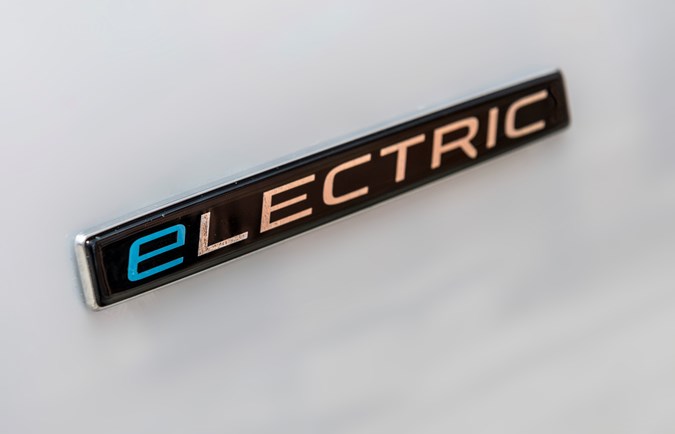
Mercedes reckons the running costs for electric models improve even more when you go for a ‘complete eDrive ecosystem’ – meaning on-site charging should prove more efficient and more convenient than travelling to a filling station.
4. Co-creation
This means Mercedes intends to work more closely with customers to create vehicles that are bespoke for their specific needs.
The first example of this is already happening with delivery company Hermes – which begins a parcel delivery pilot in Hamburg and Stuttgart in 2018. This will be expanded to other areas and eventually involve 1,500 electric versions of the Vito and Sprinter by 2020.
This pilot goes beyond electric drive of the vans to include installing charging infrastructure at Hermes logistics centres and the necessary optimised fleet management software – as well as trialling ‘automatic load-space systems’ that can load and unload packages.
A preview of such a system was shown on the Mercedes-Benz Vision Van concept in 2016.
5. Technology transfer
This will see Mercedes Vans taking advantage of the electric vehicle development already in place at Mercedes cars – a logical move, really.
This includes the batteries, which come from Deutsche Accumotive, another subsidiary of Mercedes Vans’ parent company Daimler.
Beyond all this, though, Mercedes Vans also says it is investing another €150 million (around £135m) in electric vehicle technologies, on top of what is already being spent by the Daimler group.
Exciting times lie ahead.
Also read:
The Parkers Vans guide to electric vans
Electric version of next-generation Mercedes Sprinter confirmed
The most reliable vans according to the FN50 van reliability survey
Just so you know, we may receive a commission or other compensation from the links on this website - read why you should trust us.


